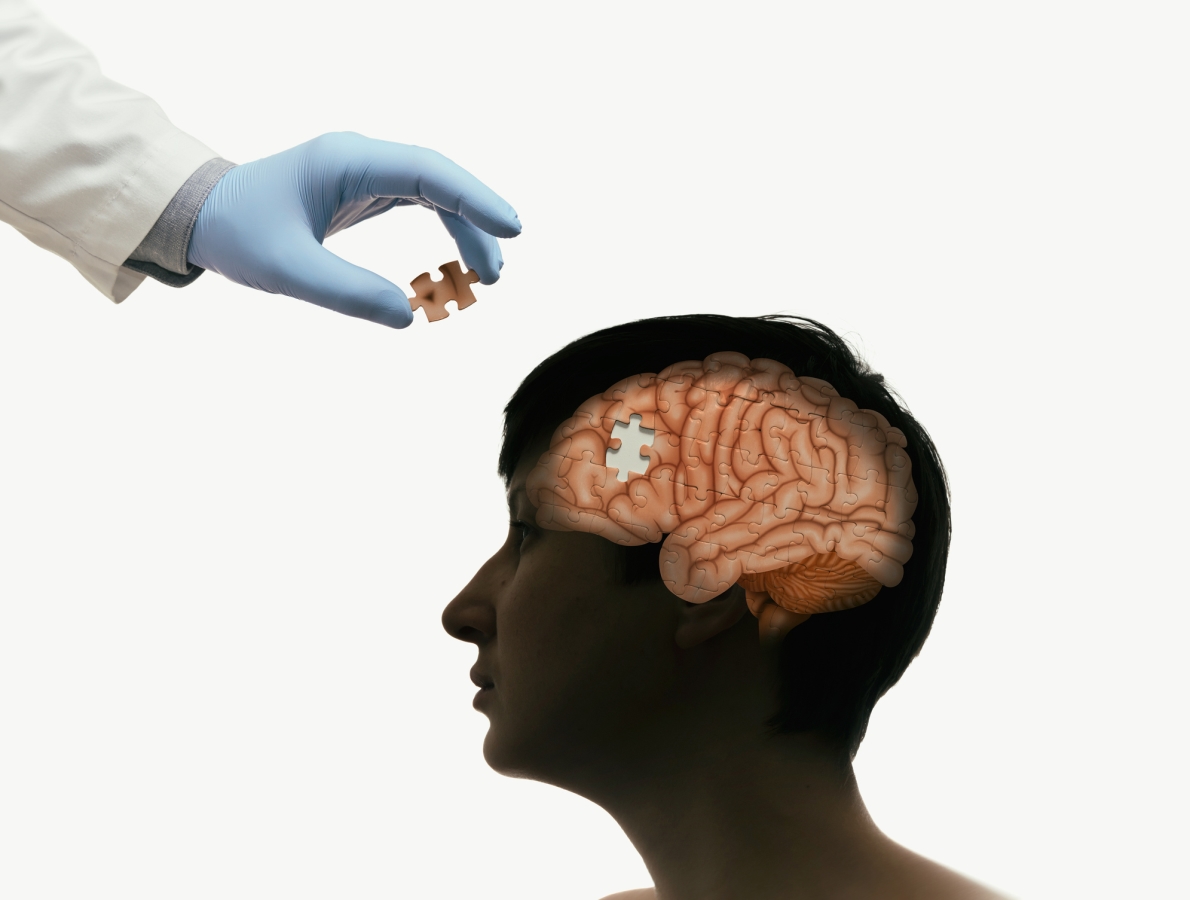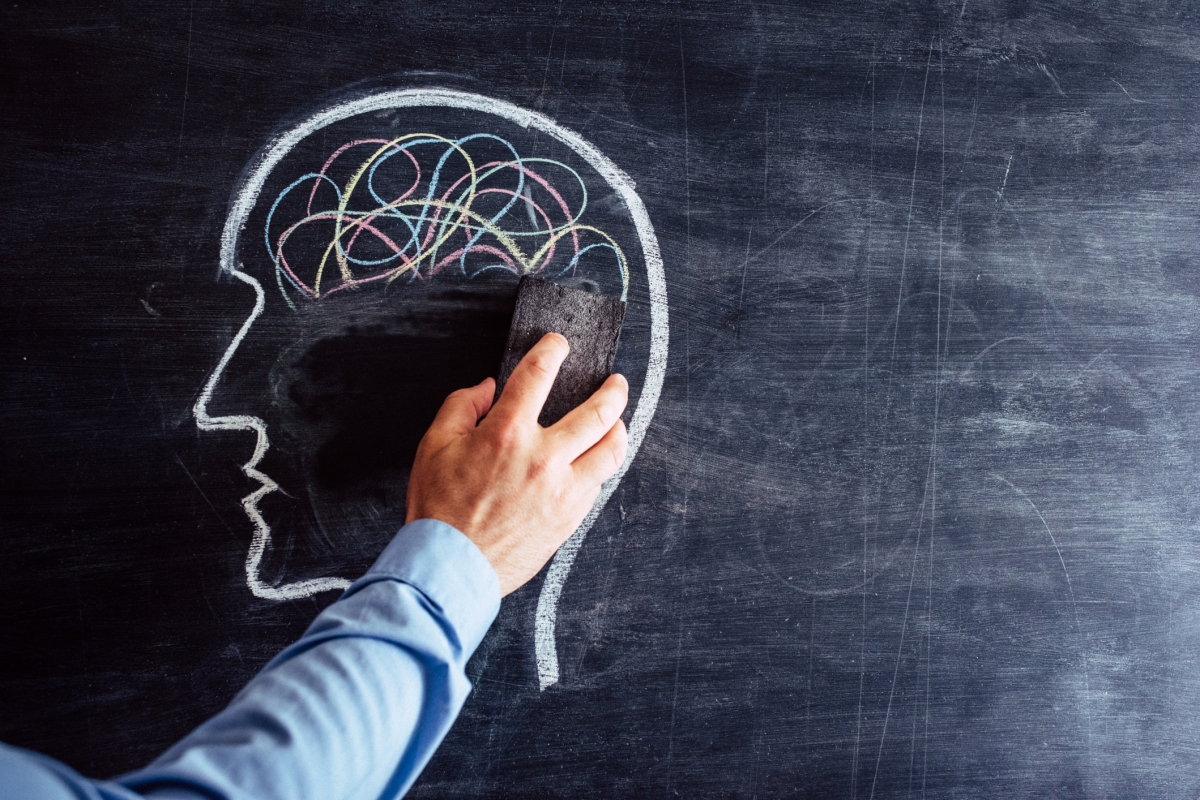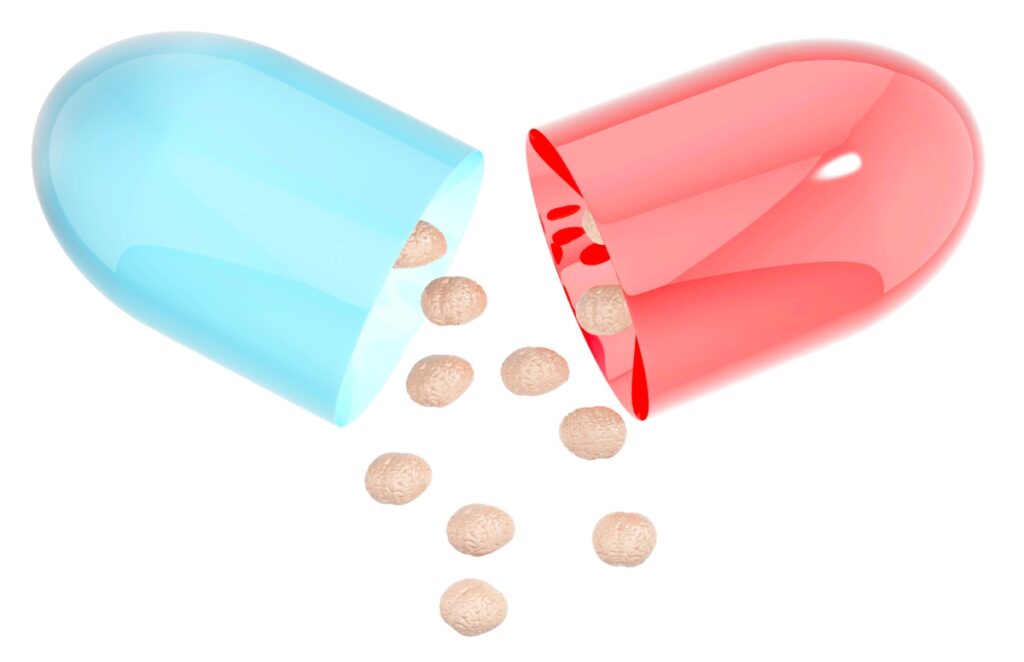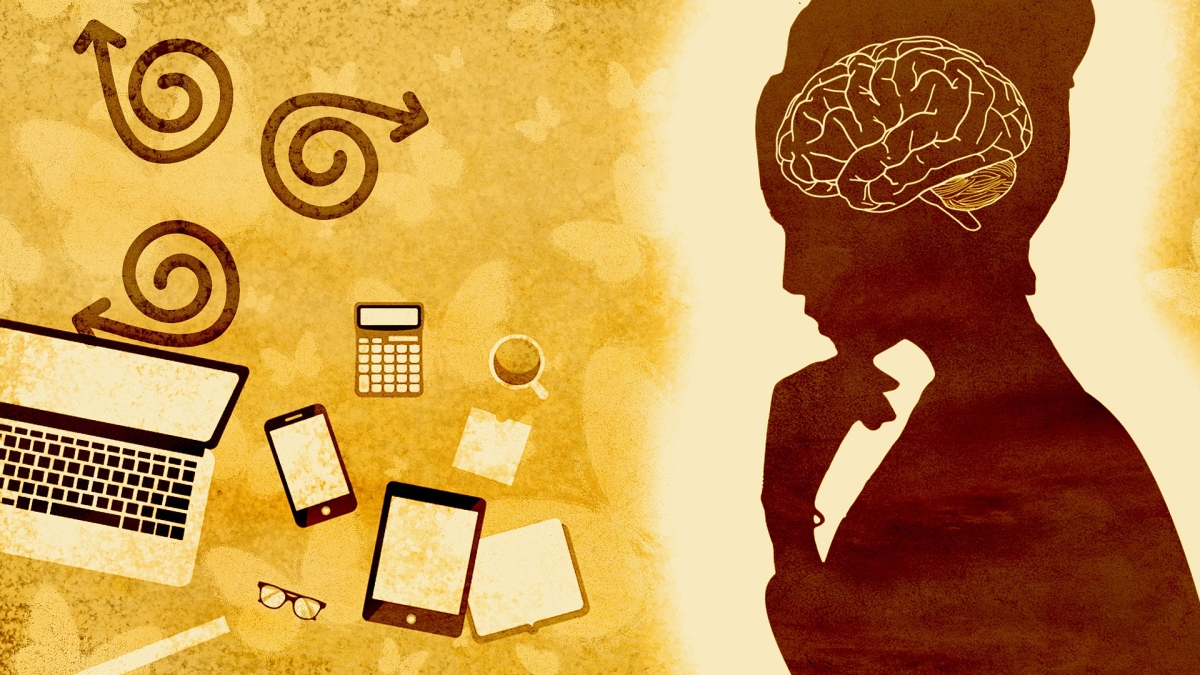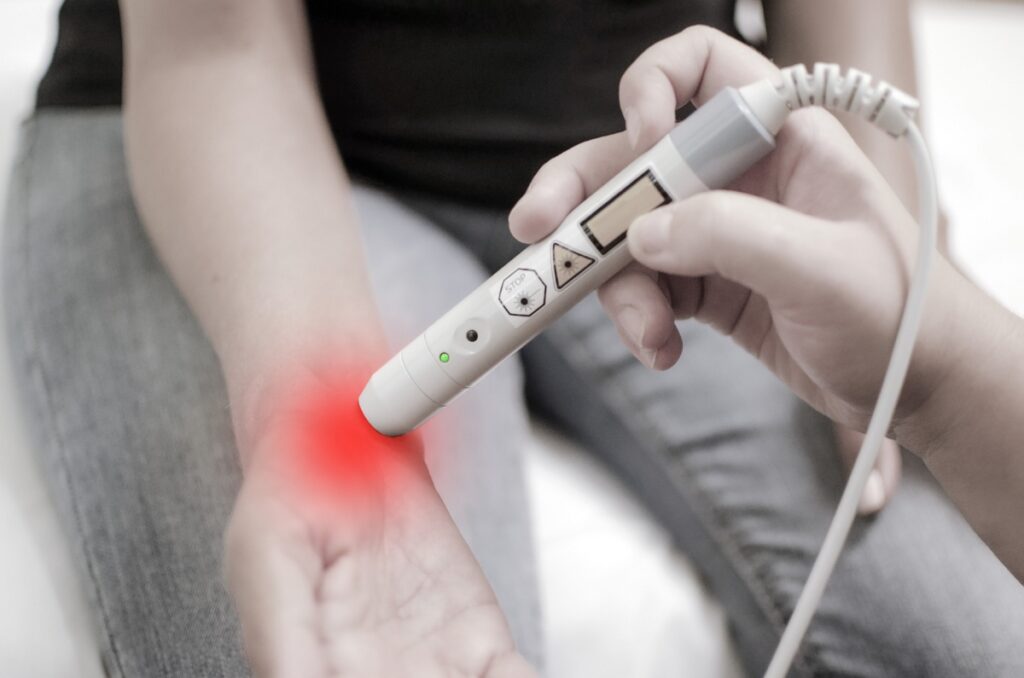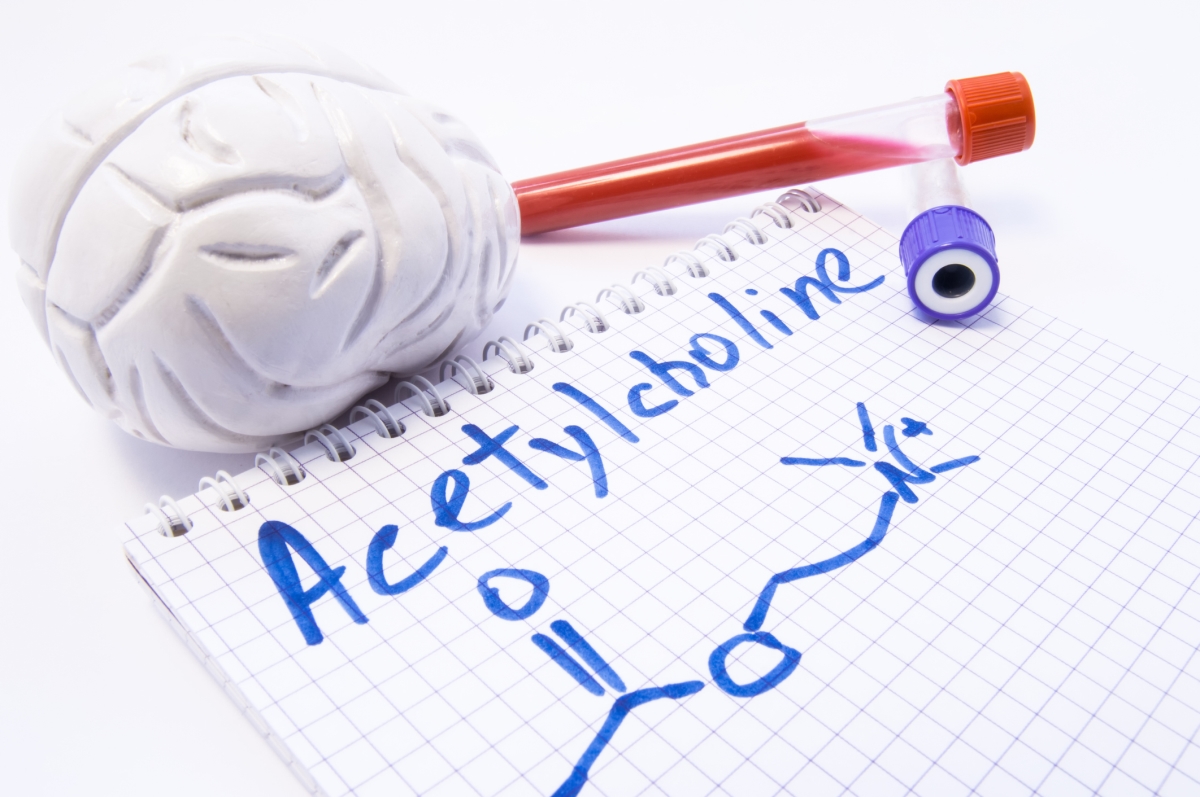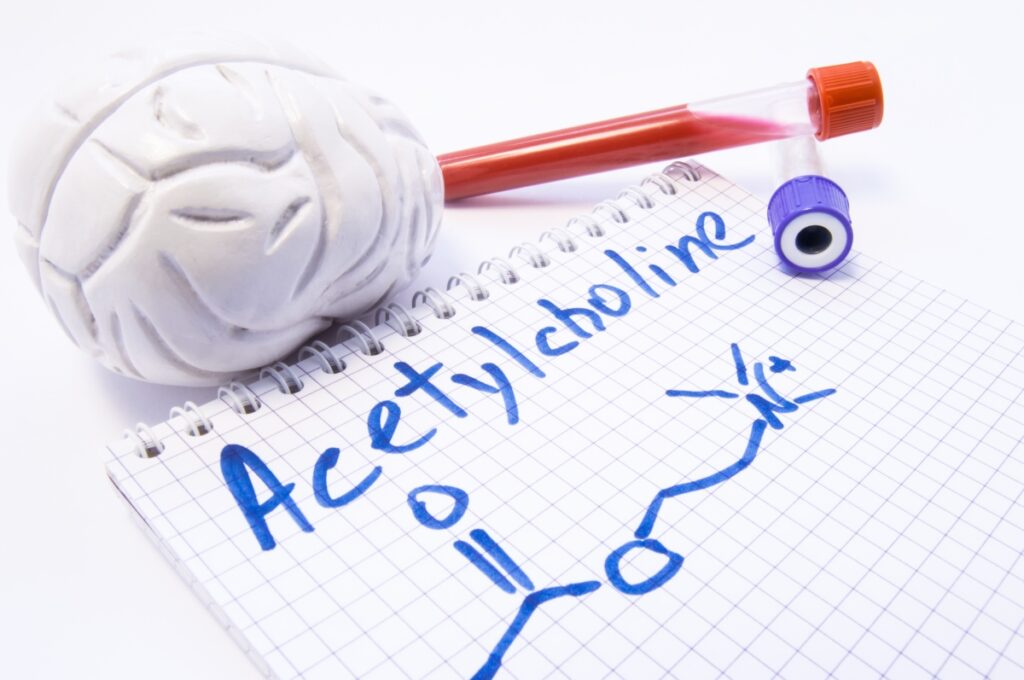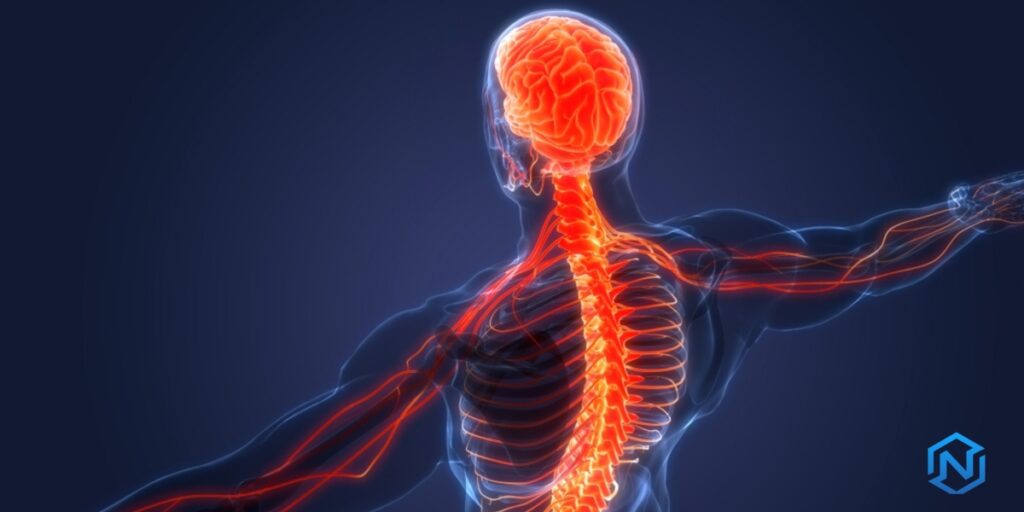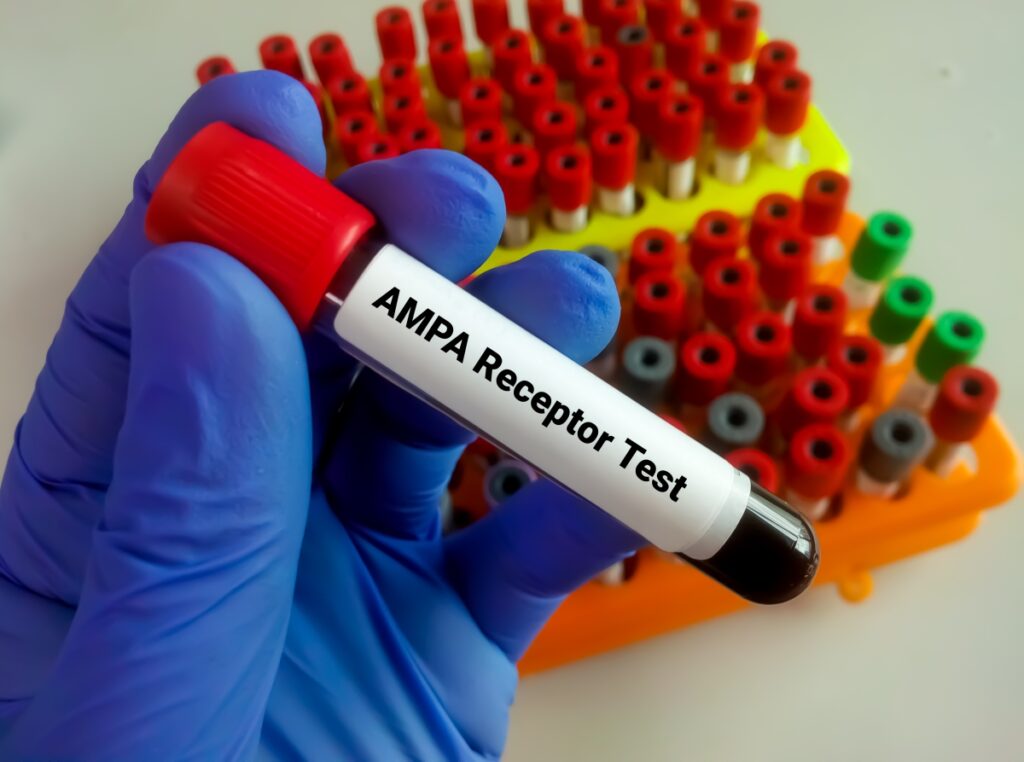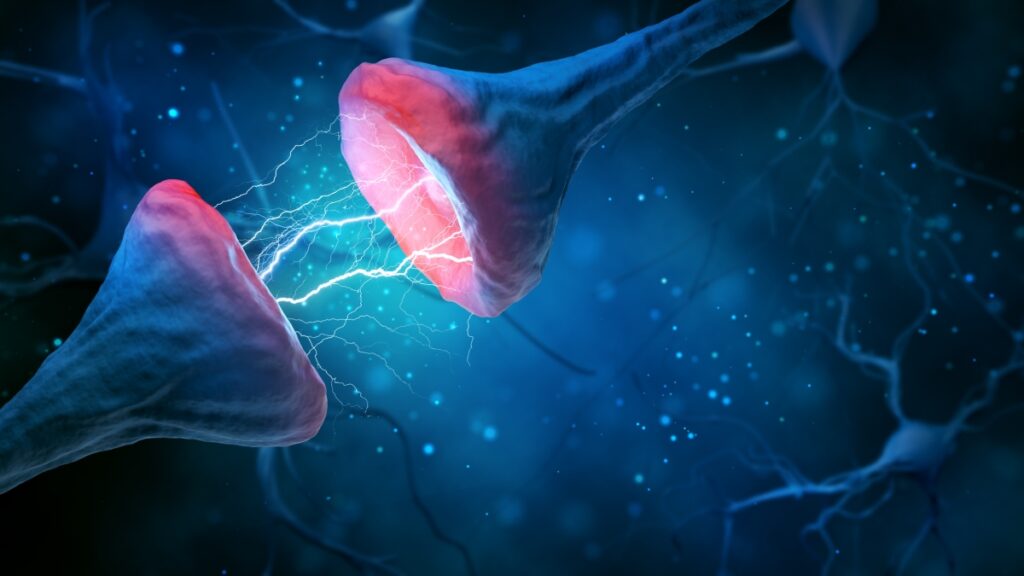Having spent over $150,000 optimizing my brain over the past few decades, the following are powermoves I still follow and recommend. These 12 power moves will help you get the most out of your Nootopia stacks.
Everyone’s brain chemistry is unique. But here are a few universal brain-boosting principles that apply to everyone. These nootropics are not your basic vitamins or supplements. They are very powerful physiological and neurological enhancers.
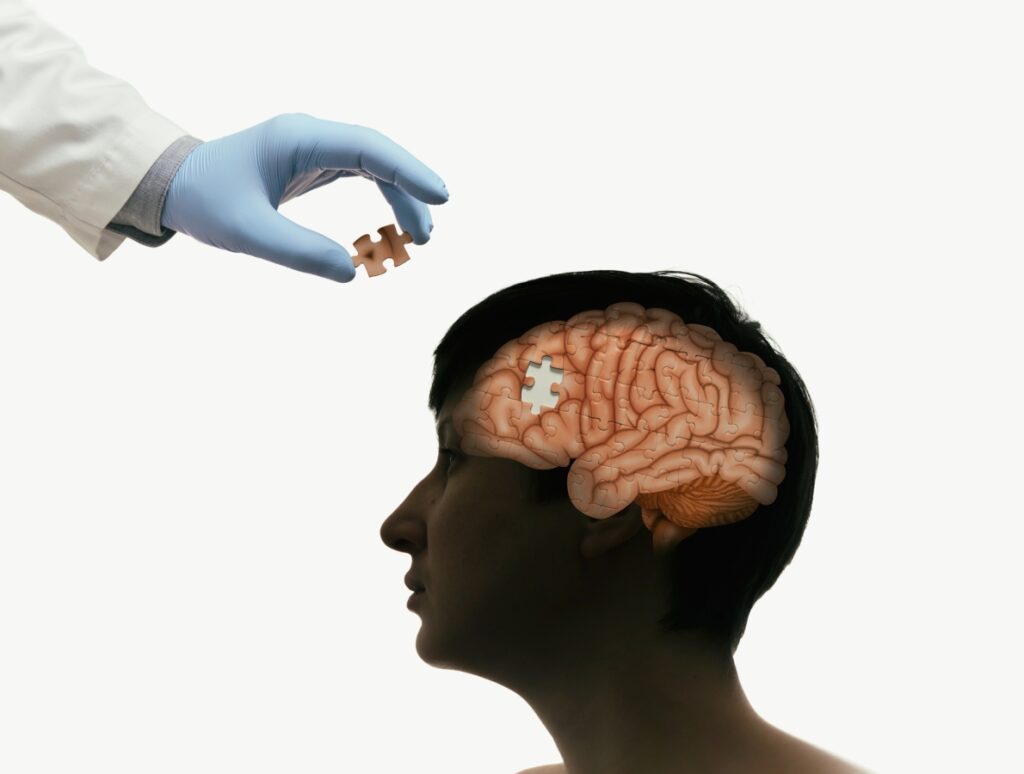
1. Take The Time To Experiment And Find Your Personal Sweet Spot: More Is NOT Better… OPTIMAL IS MORE
If you’re hardcore, like Matt, you might be tempted to go all in and take as many brain enhancers as possible. However, that can be a big mistake.
One of the core principles of Biological Optimization is to find the ideal dose of each building block and bioregulator for peak performance. This means that optimum brain performance isn’t achieved by taking as many brain enhancers as possible. The goal is to get you to your ideal brain state, stay there, and avoid going beyond.
Approach brain optimization like a symphony. You want to have the full orchestra playing at the right volumes. You don’t want the cello or drums to “overpower” the rest of the orchestra. You don’t want to just hear “bass” in the mix.
So, you want to experiment to identify your optimal “brain stimulation sweet spot.”
That’s where the “Apex Performance” is… AKA: The Zamner Zone.
Too many cognitive enhancers can cause jitters, brain fog, a numbing of your senses, maybe a slight headache, and a dumbing down of your performance. However, when you take too little, you don’t activate the peak performance state you want.
Especially in the case of Nectar X and Power Solution, it means sipping instead of chugging. See how your brain reacts to ¼ of the tube. Wait for the effect, then manage the dose as you learn how your mind responds to each Breakthrough Brain Stack.
This means following the 30-day Guided Nootopia Journey, designed to ramp you up into the stacks slowly. This way, you can easily see what works for you and what doesn’t. You can learn the right amount of nootropics that works for you – “What’s too much?” “What’s not enough?” and “What activates YOUR ZAMNER ZONE?”
Everyone is unique. Neurotransmitter dominance and deficiencies, hormones, and ability to break down each nootropic vary wildly per individual. Your response to Nootopia stacks changes based on your unique genetics, lifestyle, age, food intake, and other factors.
Be patient and just follow the 30-day Guided Nootopia Journey and take notes. This will lead to major improvements in managing your performance and mental state.
2. Reduce Your Caffeine Intake As Nootropics Can Greatly Potentiate Its Effects
This means that 1 cup of coffee will perform like 3-5 cups. We don’t use a lot of caffeine in our blends (unless you want us to because there are more effective ways to optimize your brain and energy). One of the issues you may encounter is feeling anxious drinking the same amount of caffeine you used to. This is especially true with Power Solution, Focused Savagery, and Nectar X.
Because of your individual genetics, this varies greatly. For example, some people are slow caffeine metabolizers, and ½ a cup of coffee keeps them awake at night. Others can pound a double espresso and take a nap.
This is why we suggest using decaf or half-caf/half-decaf coffee when you start the nootropics. If you’re super caffeine sensitive, start with decaf.
Using the modified version of buttered coffee below can take your experience to new heights. THE MAIN POINT IS: YOU MUST FIND YOUR OWN “SWEET SPOT” WHEN IT COMES TO CAFFEINE CONSUMPTION, and this “sweet spot” is going to be very different than it used to be when using these Breakthrough Brain Stacks.
Note: Just as our nootropic stacks improve cognitive performance, some of these stacks also support and improve adrenal response. Critical to managing how you handle stimulants (like coffee and energy drinks). It’s entirely possible to reverse adrenal damage you may have experienced from excess stress, poor diet, and even genetic issues.
All of that changes today – you are taking control of your mind and body with the most effective brain and body stacks ever assembled.
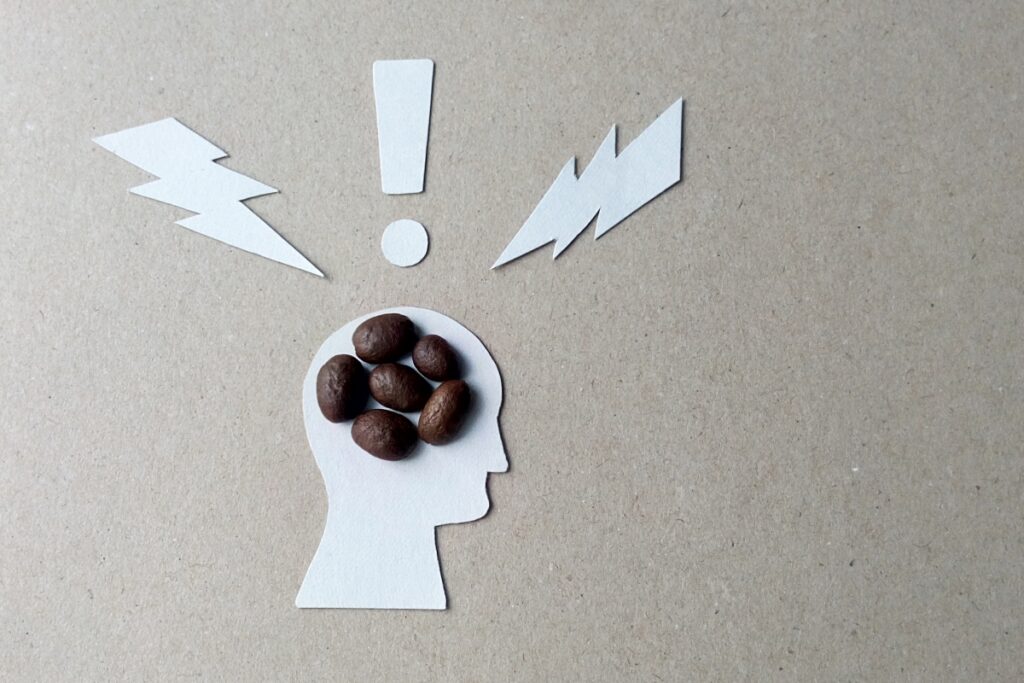
3. Use Glucose As A Performance Enhancer
Nootropics eat glucose for breakfast, lunch, and dinner: The brain is primarily made of DHA (DocosaHexaenoic Acid, an omega-3 fatty acid), but glucose fuels the brain. It CAN run on ketones; however, key areas of thinking are still dependent upon glucose to function.
If you find yourself “nooted up” but you’re struggling to find the right words and phrases, it’s likely because your high-performance, nootropics-enhanced brain is starving for glucose.
You don’t need a lot of carbs to optimize this. You just need 10-20 grams: A handful of grapes, a glucose shot, honey-laced tea, or a long-burn carbohydrate like steel-cut oats dusted with cinnamon.
You can bump up your glucose a bit more when you’re in a high-performance event (all-day meeting, big pitch, playing a championship Chess match, hardcore brain training). The key with glucose is to STREAM IT IN by sipping a beverage or eating slower digesting, complex carbs (rice, oatmeal, etc.).

4. Minimize Or Avoid Weed, Alcohol, And Medication
Nootropic stacks are “blunted” by bong hits (THC specifically), excess levels of alcohol, and many meds. If you’re committed to getting high and drunk, just use Mental Reboot at night to help you recover and be ready for the next day.
Mental Reboot is specifically formulated to help remove the detritus (or residue) accumulated in the brain from those drugs and meds.
Take the night-time oral capsule and daytime sublingual, and you’ll eliminate most, if not all of those toxic residues.
5. Avoid Protein
Avoid protein? WOAH! Blasphemy! Yes, protein is the seed of life, but it blunts a lot of nootropic absorption. It can compete with the more fragile nature of nootropics. Therefore, taking your Nootopia stacks “away from” protein is how you’ll best experience the nootropic benefits. Don’t worry, you don’t need to avoid protein throughout the day.
We suggest taking your Nootropics 60 minutes before or 45+ minutes after a high-protein meal to help you maximize your nootropic absorption.
6. Stack Your Fats

Many nootropics are fat-soluble. They look for a source of fat to bond to, which helps the nootropic cross through the blood-brain barrier (BBB).
Stacking all your fats with fat-soluble supplements creates a major breakthrough in nutrient absorption. For example, research has shown you can boost CBD absorption in the bloodstream by 800% when taken with a high-fat meal. You can get similar absorption gains with many other key fat-soluble nutrients.
Matt has recently increased his vitamin D levels up to 148 ng/ml (top of the range is 100) using this approach while taking half of the vitamin D he was previously consuming.
We suggest taking all your fats + fat-soluble Nootropics + fat-soluble supplements in one shot.
This includes:
- Nootopia caps: Brain Flow, Upbeat, Focused Savagery, and Apex
- Fish oil/Krill oil
- Algae oil
- Buttered coffee: MCT/butter
- Vitamin: A, D, K, and E
- CBD/CBG/CBN
- Other high-quality fats: olive oil, macadamia nut
There will be a powerful synergistic effect taking the entire “fat stack” together. It will improve the uptake of your nootropics and moderate the uptake into the brain, which improves long-term performance. So instead of a quick spike in performance, you get a long-term, controlled performance improvement.
We suggest doing blood tests every three months when making big shifts so you can track the changes in biomarkers.
Optimize Your Vitamins And Minerals
Many folks are vitamin and mineral deficient. As a result, they’re running on fumes and taking nootropics as a way to recover their performance deficit.
It doesn’t work like that. We DO ensure each nootropic stack is a complete B-vitamin matrix, but you may be depleted. By ensuring you keep optimal nutrient levels, you will experience better brain performance.
Instead of starting from a minus five (-5) performance level, you’re starting from a plus two (+2) or a plus five (+5). That makes a huge difference in your brain performance improvement scale. Add the right stack on top of an already optimized body, and you’ll be activating a plus ten (+10) or better. That is the difference between the average and superhuman performance.
Adding Primergen-V and Primergen-M to your daily stack can make a big difference, and adding Magnesium Breakthrough makes a massive difference in balancing your nervous system.

7. Sleep Is The World’s Greatest Performance Enhancer
Most people are running a sleep deficit. This causes their neurochemistry to malfunction since most natural neurochemicals are produced during sleep. The consequences of inadequate sleep and its negative effects on brain performance are well documented.
This also means your brain isn’t as “clean” as it needs for optimum performance. Your nootropics have to fight beta-amyloid proteins and similar detritus to perform their magic. So getting good sleep is critical to performance. You cannot out-supplement insufficient or poor quality sleep.
Sleep is your best friend. Your nootropic performance enhancers will be much more magical with enough high-quality sleep.
8. Drink Water Like You’re Heading Into Deep High Desert
When you take Nootopia blends, your need for water increases. Some people need double to triple the amount of water they normally would to keep the body hydrated. Water and brain performance are highly interlinked. Even a 1% drop in dehydration will lead to a drop in brain performance.
When pushing your brain hard and deep, your body needs more water. Matt has had intense workdays where he drank 8 liters of water.
Powermove: Mineralize Your Water
Adding ¼ to ½ tsp of high-quality salts (we recommend Himalayan or sea salt) is an inexpensive way to get more minerals into your body. The sodium will help you absorb the water more.
For people on ketogenic diets, we recommend adding ½ tsp of cream of tartar with the salt in 2 liters of water once a day to get the necessary potassium. We also recommend using three droppers a day of Primergen-M to get the required amounts of trace minerals.
Make sure to be POUNDING water throughout the day.

9. Add A Music Stack
Music is an activator of neurochemistry. Most people have never thought of music this way, but it’s true for everyone. Everyone has certain songs or genres of music that make them feel certain emotions and states.
Want to get hyper-aggressive? Put on some Metallica and Tool, and you’re on your way. Want to feel like you’re on an epic adventure? Put on some soundtrack music. Feel melancholic and want to process those emotions? Put on some sad ballads. Want to feel euphoria? Put on EDM and start dancing (see tip #10).
The Nootopia blends will synergize with music and amplify those states. This is a powerful tool in the “State Creation Toolbox.”
10. Movement is LIFE
Many people take supplements and immediately become sedentary. They sit in one place and expect the supplement to do their heavy lifting. That’s not how it works.
With Nootropics, first, you’re in a race to get the active ingredients (the “stack”) into the bloodstream and then through the Blood-Brain Barrier (BBB). It takes blood flow to make that happen. Passivity is the enemy of blood flow – sitting sucks for optimizing brain performance.
The ideal would be a 5-15 minute moderate cardio workout: biking, walking, yoga, swimming, etc.
Pressed for time? Don’t worry because you don’t need to do a full workout to activate the nootropics. Sixty seconds of movement every hour will make a massive difference in your energy and brain performance.
The key is to make it a habit. Put an alarm or notification on your phone “to move.” Micro bouts of movements are all that’s needed. Here are a few simple Power moves you can do:
1. A walk around the block
2. 1 set of 10 air squats (bodyweight squats)
3. 1 set of push-ups
4. DANCE!
5. A few yoga poses
Whatever you can do to accelerate blood flow will dramatically aid the performance of your nootropic stacks.
In fact, why don’t you stand up right now and do five air squats?
Did you do them yet? C’mon… It’s all about action. LIFE IS MOVEMENT. GO!

11. Push Your Brain: HARD, FAST, AND DEEP
To truly experience the power of Nootopia, you must activate your mind and push it. Nootropics don’t “do the work for you”; they’re like steroids (minus the side effects). Even someone on steroids needs to go to the gym to get the benefits.
Great opportunities to activate your mind and take it to new heights with Nootopia:
- Long workdays
- Strategic planning meetings
- Creative work (songwriting, writing, copywriting, art, etc.)
- Hyper-competitive video gaming
- Presentations (sales, interviews, teaching, etc.)
- Intense brain training
12. Create The Perfect Day Before It Starts
When your day starts, we suggest starting with prayer and meditation. Take this quiet time to craft the perfect day in your mind. Here are some questions you can ask to help create it:
- What’s in your schedule?
- Which state is ideal for your activities?
- What do you want your day to feel like?
First of all, those questions will help you shift into the state you envision. Second, the answer to those questions will help you choose the ideal Nootopia stack based on what state you want to activate.
